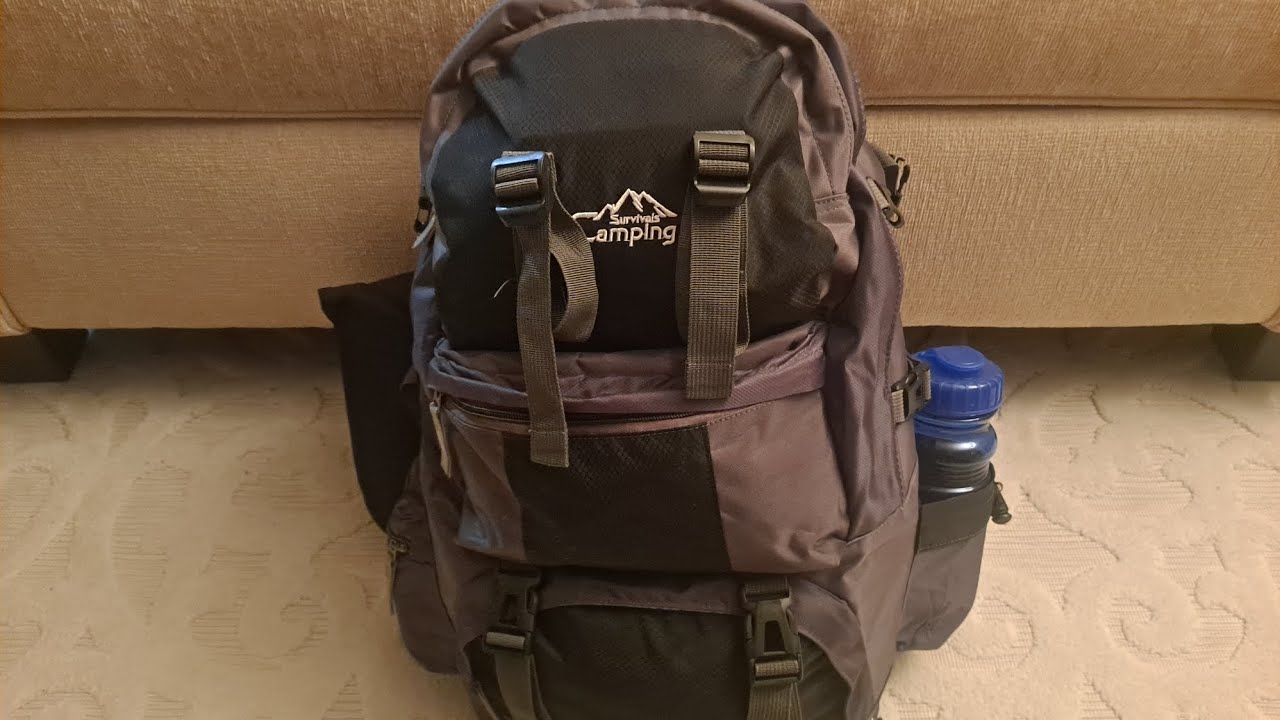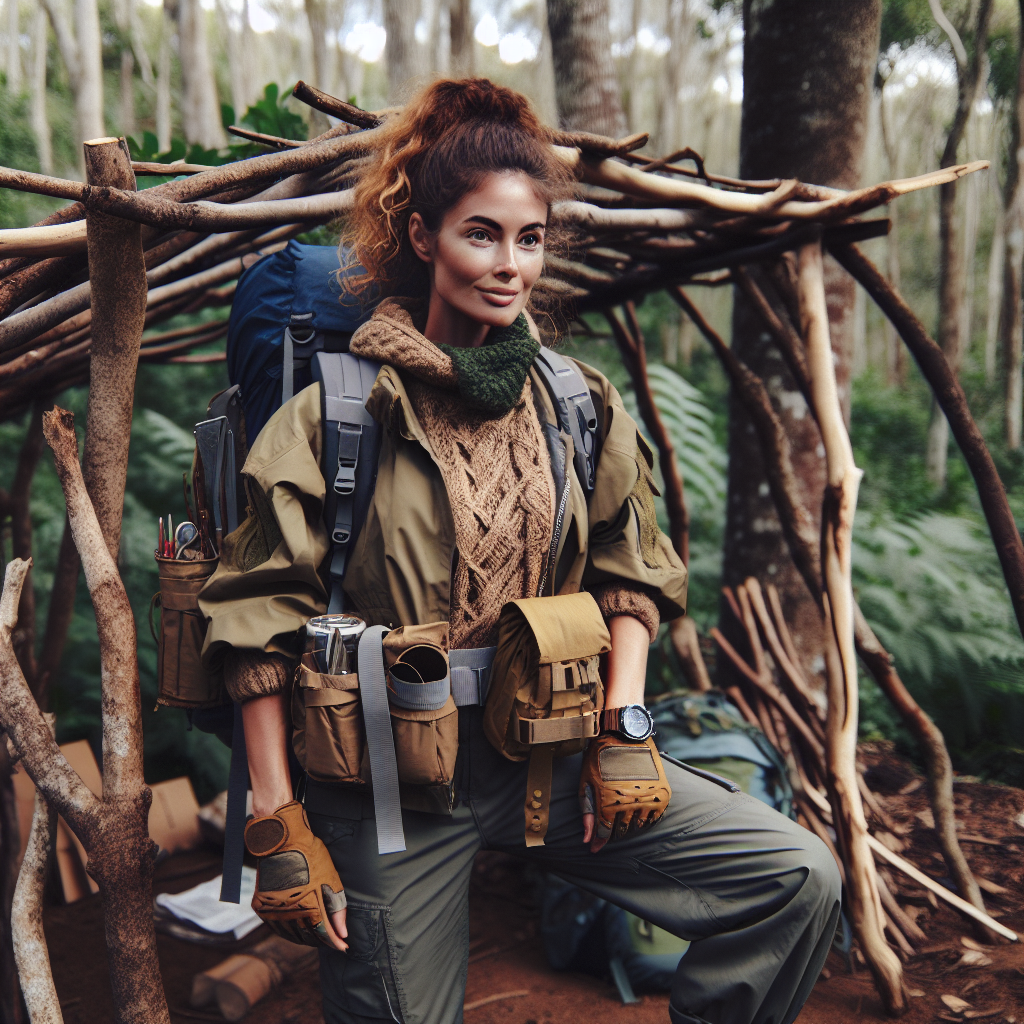Womens Preparedness
Empowerment through Education: How Survival Training is Changing Lives

Empowerment through Education: How Survival Training is Changing Lives
Hello, ladies! I’m Jade Tripp, and I’m thrilled to share with you the transformative power of survival training and how it can empower us as women. In a world filled with uncertainties, feeling safe and secure is paramount. But what if I told you that the knowledge and skills we acquire can be our strongest allies? Let’s dive into how survival training is changing the lives of countless women—and how it can change yours, too.
The Importance of Survival Training
Every day, we face challenges that test our resilience, creativity, and adaptability. Survival training equips us with practical skills that foster confidence and independence. By learning survival techniques, you’re not just preparing for emergencies; you’re also cultivating a mindset of empowerment.
Real-Life Inspirations
Consider the story of Mia, a single mother from Los Angeles. After a series of unsettling incidents in her neighborhood, Mia attended a self-defense workshop. Not only did she learn vital techniques to protect herself, but she also became a mentor in her community, leading workshops for other women. Mia’s journey exemplifies how one course can ripple out, affecting not just individuals but entire communities.
In another case, a small group of women in rural Montana formed a survival training collective. They learned skills such as wilderness navigation, foraging, and basic first aid. This collective fostered an environment where women could support one another while increasing their knowledge. They share the joys of camping, hiking, and even prepping together. The camaraderie built through these shared experiences has blossomed into unbreakable bonds of friendship.
Building Skills and Confidence
Survival training covers a broad spectrum of skills, from self-defense techniques to basic survival tactics like shelter-building and food procurement. Here are a few examples of skills you might acquire:
-
Self-Defense Techniques: Courses like Krav Maga or Brazilian Jiu-Jitsu help to develop reflexes, awareness, and confidence. Instructors like Kiyomi McCloskey, a black belt in Brazilian Jiu-Jitsu, advocate for women learning to defend themselves against potential threats. Kiyomi emphasizes that physical awareness and the confidence to stand your ground can dramatically shift your perspective when walking alone at night or dealing with uncomfortable situations.
-
Basic Wilderness Survival: Organizations like the Women’s Wilderness Institute offer classes that encompass fire-making, navigation, and foraging. Imagine standing in the woods, knowing how to create a fire not just for warmth, but also as a signal to help in case you’ve lost your way. Such skills enhance self-reliance and diminish fear in unfamiliar settings.
- First Aid Training: Knowing how to respond in medical emergencies can be life-saving. Whether it’s a small cut while hiking or a more serious incident, the confidence in administering first aid can significantly reduce panic.
Creating a Supportive Community
Engaging in survival training doesn’t just empower the individual; it creates a strong community. Women who train together often form lasting friendships and support networks.
For instance, the “Girls Who Hunt” initiative is a movement that combines hunting skills with self-defense training to empower women in the outdoor community. Participants share knowledge, resources, and support each other – all while enjoying the thrill of the hunt.
Additionally, programs such as Camp Sunshine in New York provide education on preparedness and survival skills in a collaborative and encouraging environment. These programs are designed not only to teach skills but to build girls’ leadership capabilities. The sense of belonging and teamwork is invaluable, especially in a society that sometimes marginalizes women and their abilities.
The Mindset Shift
Perhaps one of the most profound changes that comes from survival training is the shift in mindset. When women feel equipped and capable, it enhances their self-esteem and resilience.
Consider the empowering concept of “situational awareness.” It involves understanding your environment and recognizing potential threats before they become problematic. Training in this area teaches women to trust their instincts, empowering them to navigate everyday situations with greater confidence.
Overcoming Challenges
It’s natural to feel intimidated at first. Women may hesitate to participate in survival training due to fears of physicality or the potential for failure. Acknowledge this feeling; you’re not alone. Many women experience similar apprehensions. But remember: every expert was once a beginner.
When Caroline first approached a self-defense class, she was nervous and uncertain. Gradually, she found that everyone was supportive and encouraging, and she discovered she had more strength than she realized. Today, Caroline leads classes herself, sharing her journey and encouraging others to step out of their comfort zones.
Let’s Take the Next Step Together
If you’re ready to engage in survival training, start by researching local organizations or online resources. Many communities offer introductory classes that cater to women, first-timers, and those looking to build on their existing skills.
Connect with fellow women who are interested in self-defense or preparedness. Join forums, social media groups, or local meet-ups. Supporting one another can lead to incredible growth and transformation!
Final Thoughts
Empowerment through education is a powerful tool for changing lives. By investing in survival training, we’re not only preparing ourselves for unforeseen circumstances but also equipping ourselves with the confidence to embrace life fully.
In closing, I invite you to embark on this journey of empowerment. You are capable of more than you know. Let’s empower each other, share our stories, and build a community of strong, knowledgeable women ready to take on the world together. Are you in?
Womens Preparedness
BUG OUT BAG FOR WOMEN | EVACUATION | PREPAREDNESS | LONG TERM GOT TO GO BAG

Thank you for watching my video. Please Subscribe Like Share to my channel https://youtu.be/zuABiko5y40 …
source
Womens Preparedness
How Multitasking Can Help or Hinder Emergency Response

Hello, fabulous women! It’s Jade Tripp here, and today we’re diving into a topic that can undoubtedly make a difference in how we respond to emergencies—multitasking. As women, we often pride ourselves on our ability to juggle various responsibilities simultaneously. Whether it’s managing work deadlines while planning our kids’ schedules or organizing a community event, multitasking has become second nature for us. However, when it comes to emergency situations, this skill can either empower us or lead us astray.
The Double-Edged Sword of Multitasking
When you think of multitasking, you might think of being efficient and productive. Yet, in high-stress situations, our brains can become overloaded, making it challenging to focus on the most critical tasks. Let’s break this down into both the advantages and drawbacks of multitasking when it truly matters.
The Benefits of Multitasking
-
Quick Decision Making: In emergencies, time is of the essence. Girls, how many of us have been in a situation where we had to make rapid decisions? For example, consider the case of a woman named Sarah, who was at a grocery store when a sudden fire broke out. While most people stood frozen, she quickly assessed her surroundings, located her children, and ushered them towards the exit all while alerting others nearby. Her ability to multitask saw her through a critical moment.
-
Resourceful Thinking: Multitasking enables us to draw from various skills simultaneously. Just think about preparing your family for a camping trip—setting up tents, cooking, and keeping the kids entertained can require juggling many things. In emergencies, such as a natural disaster where you might need to help a neighbor while tending to your family, this resourcefulness can save lives.
- Enhanced Situational Awareness: Managing multiple tasks can heighten awareness. For instance, during an earthquake like the one that hit Napa Valley in 2014, women like me used multitasking to secure themselves, help others, and even account for pets. Training ourselves to multitask within safe environments can prepare us for real emergencies.
The Downsides of Multitasking
Despite its benefits, multitasking can also hinder our response in critical moments. Here are a few reasons why:
-
Cognitive Overload: When we attempt to do too much at once, our brains can become overwhelmed. This can lead to mistakes. For example, let’s take the story of Lily, who was making dinner while chatting on the phone when she heard a loud crash in her living room. In the chaotic rush to assess the situation, she accidentally knocked over a pot of hot water, causing a burn. Focusing on one task at a time—like ensuring her children were safe first—might have prevented the injury.
-
Compromised Focus: Our cognitive resources are finite, especially under stress. During emergencies, people sometimes lose focus and miss critical cues. Remember the freezing of the bystanders during an incident at a public park? Their attention was split, and the moments of hesitation that followed could have led to different outcomes had they acted decisively.
- Neglected Priorities: It can be easy to get caught up in less crucial tasks while ignoring what truly matters. In emergencies, we need to prioritize our safety above all. The tragic case of a mother in a bullying incident comes to mind—she was so busy filming the altercation on her phone she neglected to intervene, resulting in harmful consequences.
Finding the Right Balance
So how can we strike a balance in our multitasking abilities while remaining effective in emergency situations? Here are some practical tips that can make a world of difference:
-
Prioritize Tasks: Always remember: safety first. In case of emergencies, assess the situation quickly. Identify the immediate threats and act accordingly. Teach yourself to prioritize by practicing scenarios that might arise.
-
Practice, Practice, Practice: The more training we have, the more instinctive our responses will become. Participate in personal safety classes or emergency drills. Organizations like the American Red Cross offer courses in first aid, CPR, and emergency preparedness that can help you react faster and more efficiently.
-
Limit Distractions: When you hear an alarm or a loud noise, resist the urge to multitask. Focus on what’s essential—your well-being and that of others. Think of Jessica, a teacher who, during a lockdown drill, removed distractions and kept her students focused on safety—her calmness in prioritizing over multitasking led to reduced anxiety.
- Mindfulness Techniques: Engage in mindfulness practices to improve focus. Breathing exercises and grounding techniques can preserve your mental strength during tense moments.
Final Thoughts
Ladies, multitasking is an incredible skill we have honed, and while it can lead to efficiently managing everyday life, we must adapt our approach in emergencies. By understanding its strengths and limitations, we can cultivate a more effective and empathetic response to critical situations.
Let’s equip ourselves with the mindset and the knowledge to act in times of crisis. Remember, preparation is key, and embracing our roles as powerful, multitasking women doesn’t just mean juggling everyday tasks—it means being ready to protect ourselves and our communities, no matter the situation!
Stay strong and stay safe! 💪🌟
Womens Preparedness
Empowering Women with Essential Outdoor Survival Shelters

Empowering Women with Essential Outdoor Survival Shelters
Hello, fierce warriors! I’m Jade Tripp, and today, we’re diving into a subject close to my heart: outdoor survival shelters. As women, it’s crucial that we equip ourselves not just with knowledge, but also with the skills that empower us in various situations, especially when it comes to self-defense and preparedness in the great outdoors.
Whether you’re a weekend camper, an adventurous hiker, or simply someone who loves the beauty of nature, understanding how to create a survival shelter can be a game-changer. Let’s explore the essentials together!
Why Outdoor Survival Shelters Matter
Outdoor survival shelters can be a lifeline in emergencies, but they also instill a sense of confidence and independence in each of us. Picture this: You’re on a solo hike in the Appalachian Trail, and suddenly, the weather takes a turn, or you miscalculate your return time. Having the know-how to construct a reliable shelter could mean the difference between discomfort and safety.
Essential Types of Shelters
Let’s break down some fundamental shelter types that every woman should be familiar with:
-
Lean-To Shelter
- What is it? A simple structure that can be set up against a fallen tree or rock face, leaning against the support for a sturdy base.
- How to Build It: Start by finding two strong supports. Lay smaller branches against them at an angle, creating a roof. Use leaves, pine boughs, or any available debris for insulation and to protect you from rain.
- Real-Life Example: Sarah McLachlan, a singer-songwriter and humanitarian, once spoke about a camping trip where she had to use a lean-to shelter during an unexpected storm. She was able to stay dry and safe, allowing her to continue her journey with confidence.
-
Debris Hut
- What is it? A natural shelter made from available materials, such as branches and leaves.
- How to Build It: Create a framework with a strong central pole and lean smaller branches against it to form a roof. Pack as much debris (leaves, grass, etc.) onto the roof to provide insulation.
- Inspiration: Consider the survival story of Kelly McGonigal, psychologist and author, who found herself lost in the wild and had to build a debris hut. With determination and a little knowledge, she survived overnight until help arrived.
- Tarp Shelter
- What is it? A versatile shelter made using a waterproof tarp.
- How to Build It: Use ropes to create a high point, then drape the tarp down to the ground. This creates a protection from rain on one side while keeping airflow on the other.
- Community Tip: Many outdoor enthusiast groups, like REI workshops, offer classes on using tarps effectively. These can be fantastic places to learn among women with shared interests!
Gear That Supports Your Shelter-Building Endeavors
Having the right gear can enhance your outdoor experiences and ensure you are prepared in case you need to construct a shelter:
- Multi-tool: This handy device can assist in gathering materials and making necessary adjustments to your shelter.
- Rope/Paracord: Strong and lightweight, it’s essential for securing materials together.
- Emergency Blanket: Lightweight and compact, it can retain body heat or serve as an additional layer for insulation in your shelter.
The Importance of Practice
Just like any skill, practice is key. Create a fun outdoor day with your friends or fellow women adventurers where you simulate building shelters. It’s not just about learning, but also bonding and empowering each other.
In fact, the Women’s Wilderness Institute offers excellent programs that cater to women eager to learn outdoor skills, including shelter building! By participating, you not only sharpen your techniques but also build a community of supportive, empowered women.
Confidence Through Knowledge
Understanding how to construct outdoor shelters is not just a survival skill; it’s about embracing confidence, independence, and empowerment. The wilderness can be unpredictable, but with the right knowledge, we can tackle it head-on.
Remember, every expert was once a beginner. When you gather with other women, share stories, and support each other, you’re creating an unbreakable sisterhood united in strength.
So, let’s empower each other by learning, growing, and preparing for whatever adventures life throws our way. Together, we can conquer the world—one shelter at a time!
Happy adventuring, ladies! 🌲💪
-

 Womens Self Defense11 months ago
Womens Self Defense11 months agoNew Legislation Empowers Women to Defend Themselves
-

 Self Defense News1 year ago
Self Defense News1 year agoShe was convicted of killing her abusive boyfriend. Now a Maple Grove woman is home awaiting a new trial.
-

 Self Defense News1 year ago
Self Defense News1 year agoSelf-Defense for All: The new Gracie Jiu-Jitsu Pasadena is for everyone | Online Features
-

 Womens Self Defense1 year ago
Womens Self Defense1 year agoTop 5 Self-Defense Techniques Every Woman Should Know
-

 Womens Self Defense7 months ago
Womens Self Defense7 months agoUnderstanding State-by-State Variation in Self Defense Laws
-

 Womens Fitness1 year ago
Womens Fitness1 year agoXtreme Bodyweight HIIT (Lots of Jumping!) | Joanna Soh (Fio Series)
-

 Womens Preparedness1 year ago
Womens Preparedness1 year ago10 essential skills for surviving in the great outdoors
-

 Womens Preparedness1 year ago
Womens Preparedness1 year agoEmpower Yourself: A Guide to Female Survival Planning



